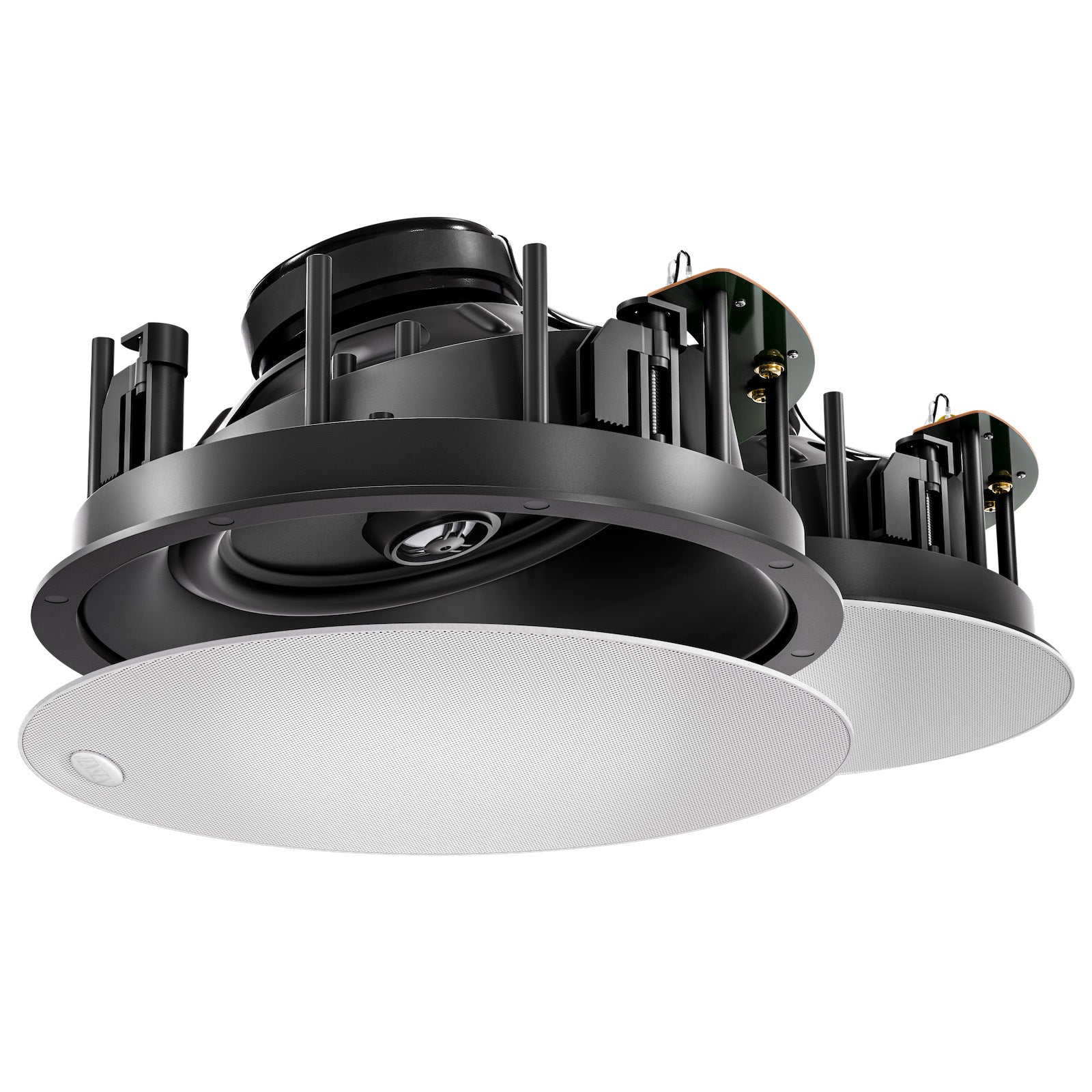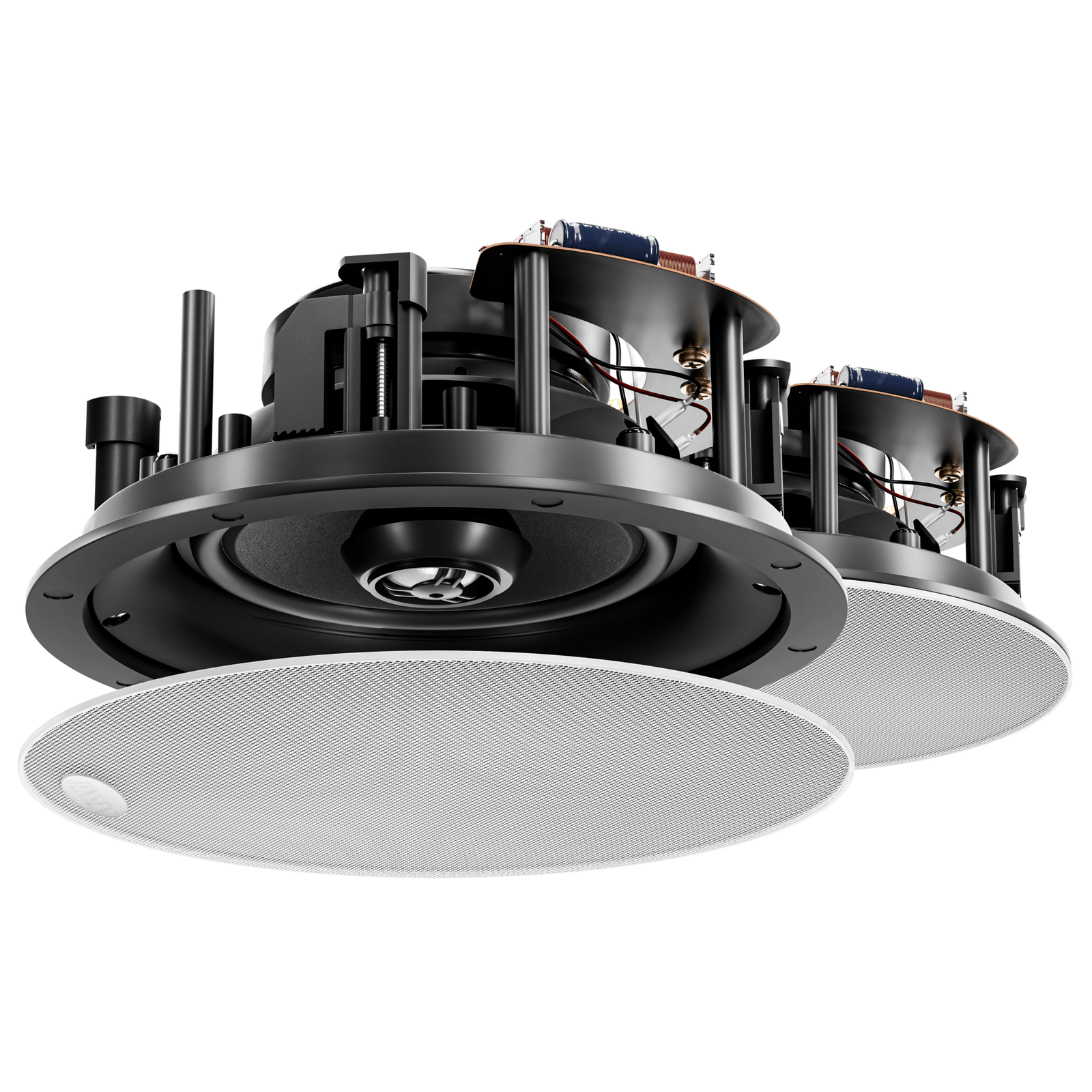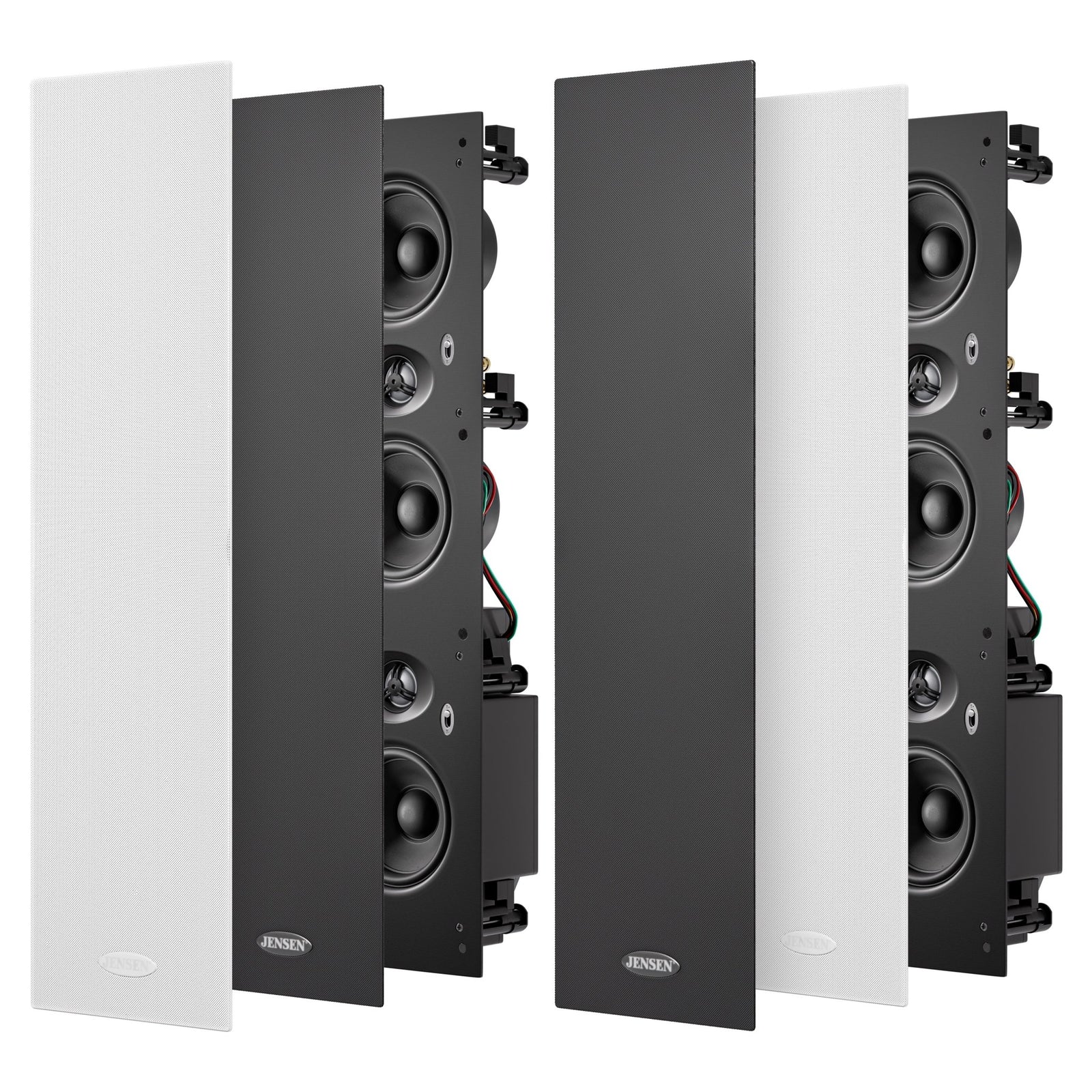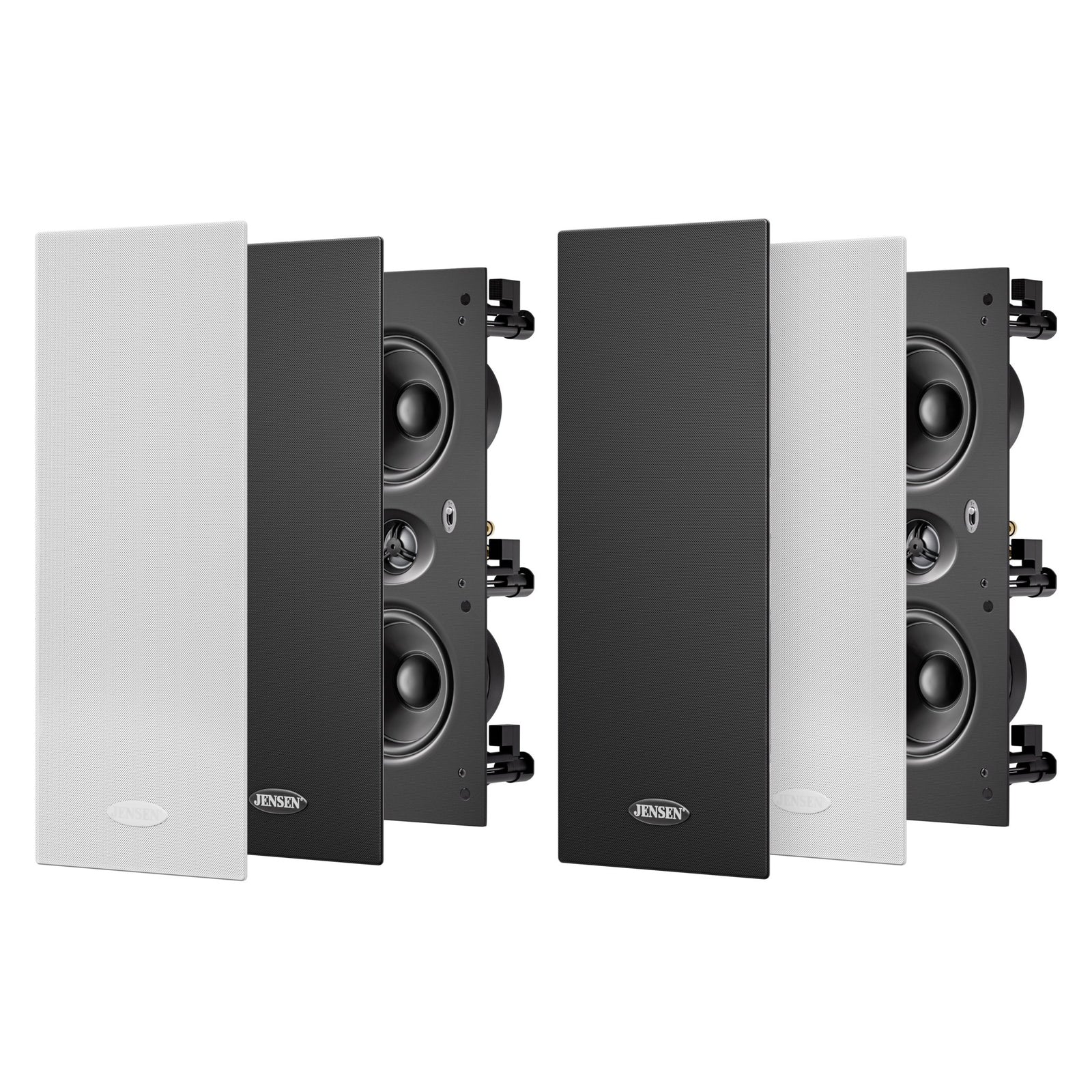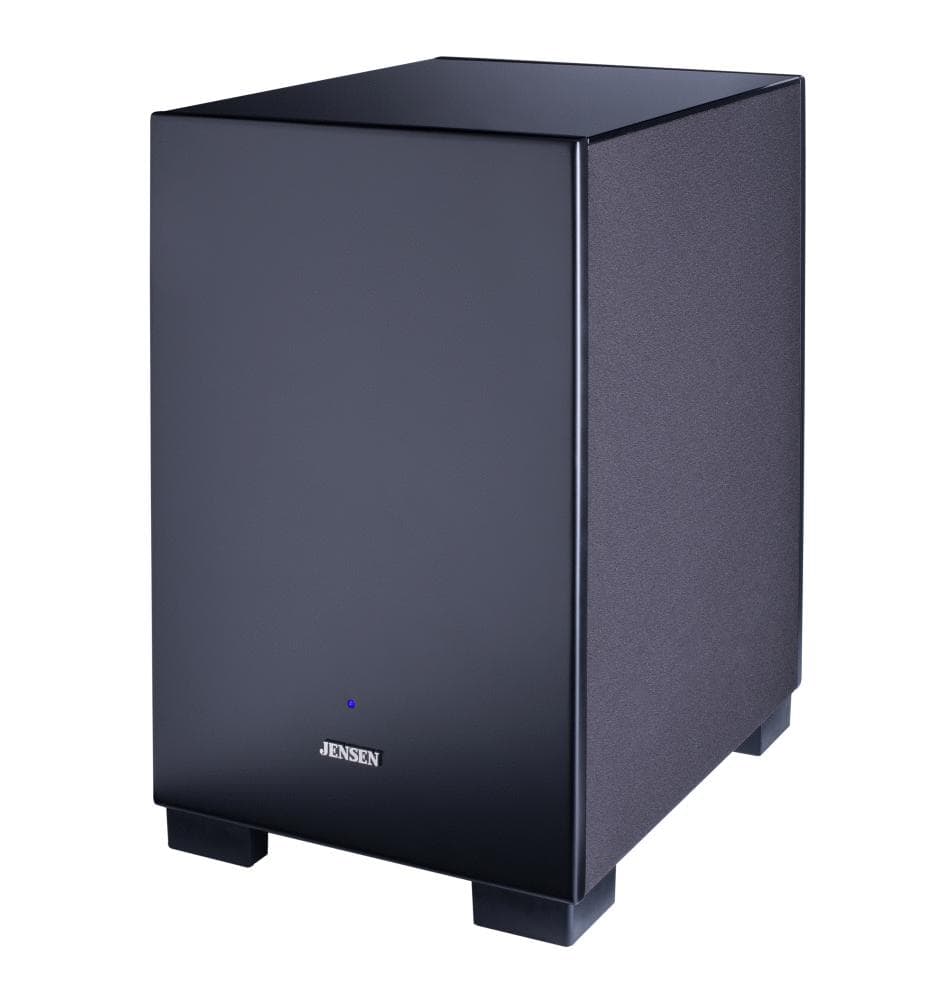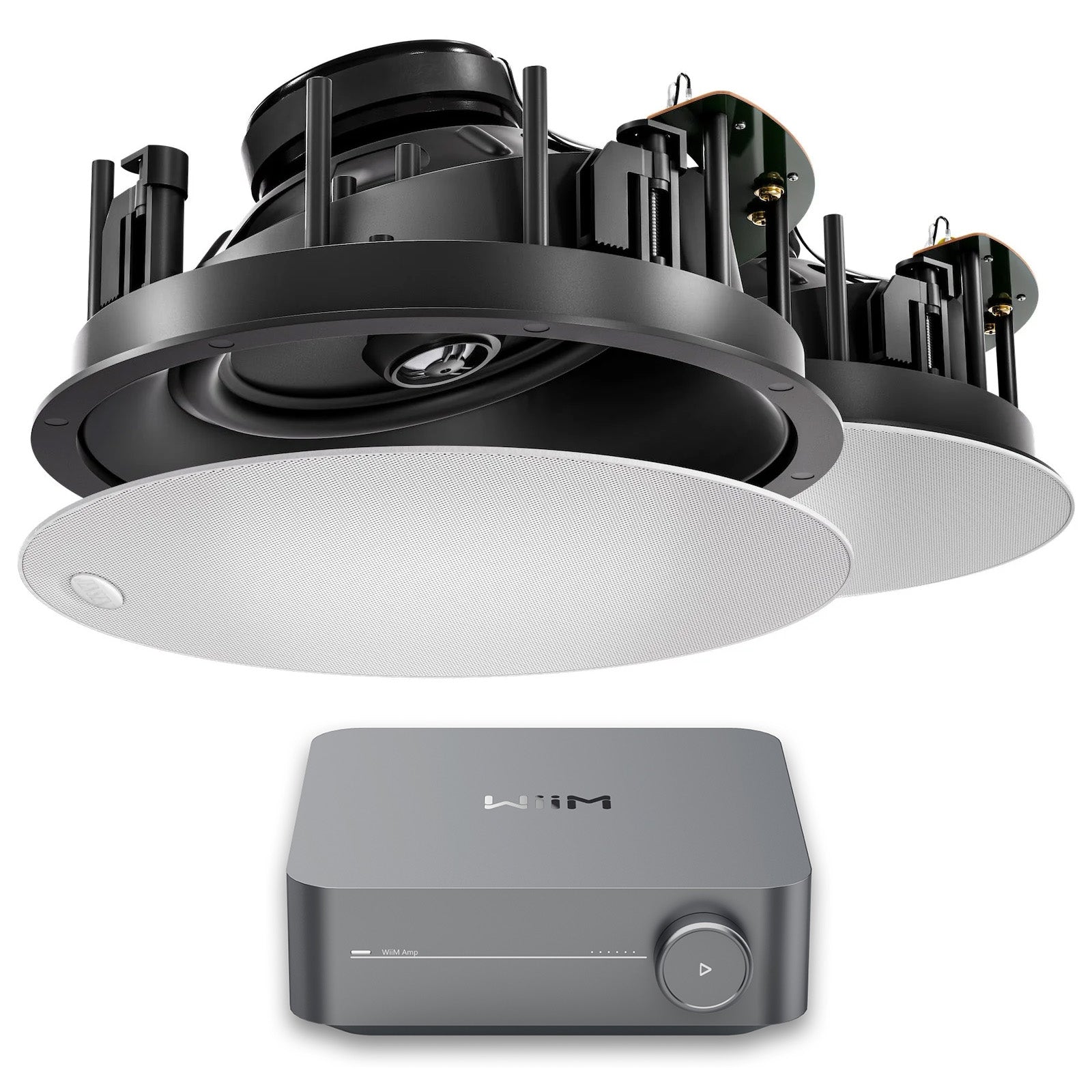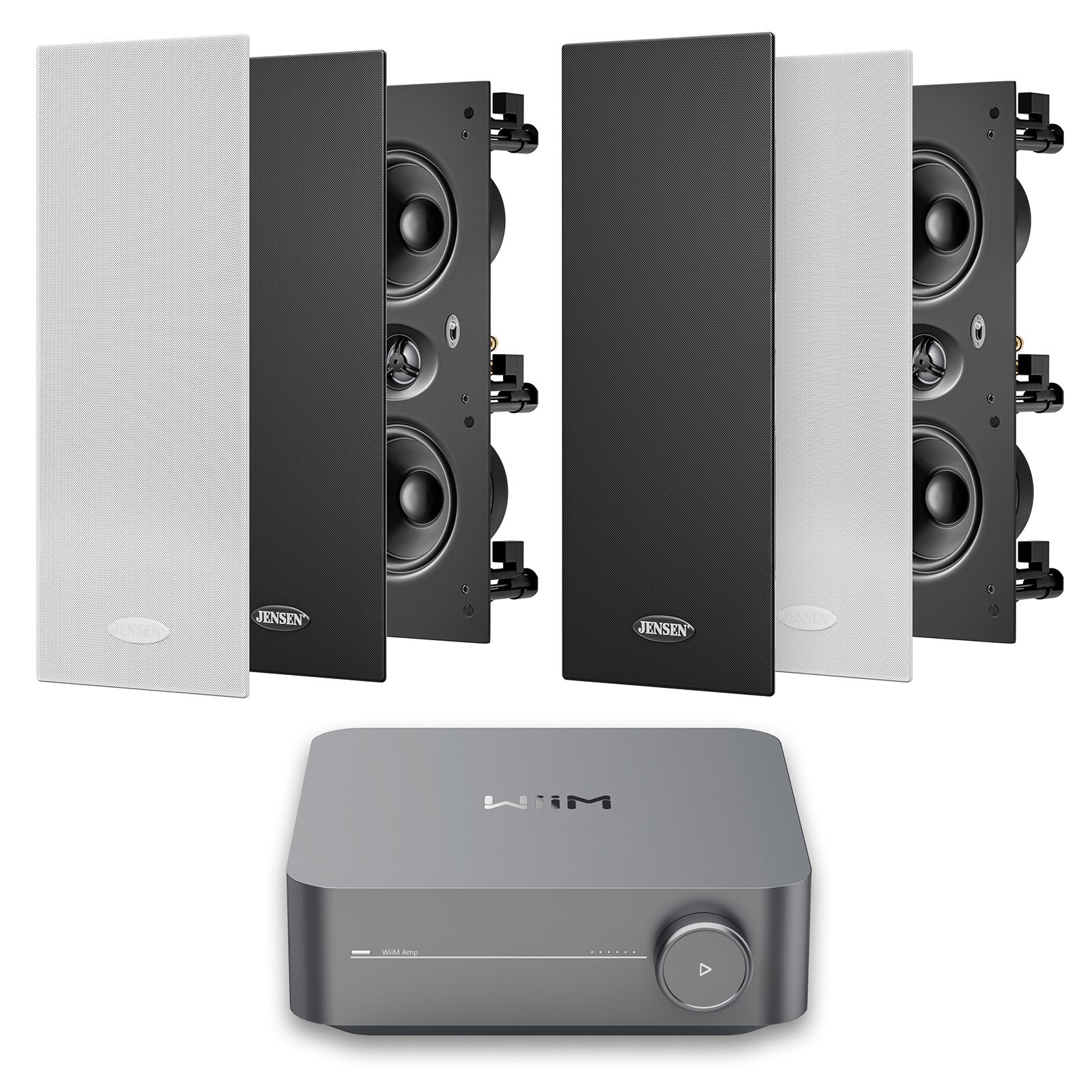IN-WALL VS BOOKSHELF SPEAKERS

If you want to decide between in-wall speakers or bookshelf speakers for your new audio system, you’re in the right place.
I’m going to lay down the facts about each type — pros and cons — and when you’re done you’ll know which is best for you.
Let’s dig in.
Contents
- What Are The Differences Between In-Wall & Bookshelf Speakers?
- The Pros & Cons Of Bookshelf Speakers
- The Pros & Cons Of In-Wall Speakers
- In-Wall Vs Bookshelf Speaker Cheat Sheet
What Are The Differences Between In-Wall & Bookshelf Speakers?
In-wall speakers and bookshelf speakers compete with each other for the #1 spot in any audio system… the front speakers.
Front speakers are the most important thing in your system when it comes to the sound quality you end up with. Most of the action comes from your “fronts.” Music is recorded in stereo and those fronts provide most of the experience. Movies contain action that’s happening up front too.
All the other speakers in a surround sound system… and all the other components (amplifier, cables, streamer, etc.) don’t matter as much as those fronts do.

Bookshelf speakers are the traditional speakers that have been around since 1929. They’ve come a long way in design and performance but in terms of form-factor they are mostly the same.
Speaker drivers (the part that moves the air and creates sounds) are attached to a box which can be sealed or “ported.” They use those ports to try and create more bass from smaller speaker drivers. It works by mixing bass that reflects off of surfaces into the bass coming towards you. (This tends to make bass bigger, but also a bit boomy.)
Bookshelf speakers usually contain two to three speaker drivers and come in pairs. The more drivers, the greater potential for clear sound.

In-wall speakers are similar in that they have speaker drivers attached to them. The difference is, instead of consisting of a box they are only a fascia.
This fascia can be installed into a wall making it flush with the wall. They are never ported… partly because they can’t predict how much space will be in the wall. Also because they’re out of the way, so they can use bigger (or more) speaker drivers to give better bass.
The Pros & Cons Of Bookshelf Speakers
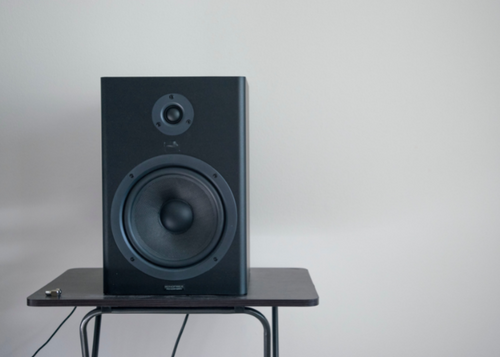
PRO: Potentially super high fidelity if you want to invest
Being a traditional form factor, there are a lot more companies working on bookshelf speakers. You have options in higher price points that use the most expensive materials to get the job done.
The market for these high-end speakers includes audiophiles who love to listen critically and strive to build the perfect system that gives a realistic sound.
There are a couple caveats to this though.For one, you’re usually looking at a few thousand minimum for one pair before the audio quality jump is noticeable.
Two, you need to work harder to deaden the acoustics of your room and spend a lot more on the amplifier and other components to actually get the true performance of audiophile grade speakers.
PRO: Can be adjusted easily
If you want to widen your soundstage or adjust the look of your room, you can easily do so with bookshelf speakers.
All you need to do is turn them a bit or pick them up and move them.
PRO: Easy to take to your new home if you move house
Similar to the above benefit, you might find yourself moving house and wanting to bring your audio system with you. Bookshelf speakers are easy to move compared to in-wall speakers that are obviously anchored into your walls.
It’s easy, but you do have to be careful not to bang them up in transit.
PRO: An enormous amount of options are available
Again, this traditional form factor has been around longer and is more common… so there are LOADS of options out there. That means a lot of styles, box sizes, etc. etc.
But of course, with lots of options comes…
CON: An enormous amount of options are available
The truth is, this PRO can also be a CON.
Having a lot of options makes it harder to commit to a decision. Sometimes the best thing you can do is narrow your focus as quickly as possible and choose something that looks great and makes sense when you’re looking at it.
Do your research and make sure you’re follow guidance that you can trust… don’t get lost in a forest of options.
CON: They rarely blend in with your room’s design
The vast majority of speakers out there look completely different from any furniture. That’s an unfortunate fact. A box with cables hanging out of it — with or without grill covers — is still a box with cables hanging out of it.
This is no problem at all for many shoppers. But for those who’ve put time and effort into making their lounge or theatre room look nice… the box probably doesn’t blend in.
CON: They can be knocked over / damaged easily
Being ‘in the room,’ a bookshelf speaker is within reach. That means it can be bumped or tipped over. This is true whether it’s on a stand or shelf. It’s also true that the cables can be a trip hazard.
This can lead to a bit of anxiety because you have to worry about your audio investment. Especially if you have children or pets around.
CON: You have to clean around them
Box style speakers aren’t low maintenance. Dust will inevitably build up and you’ll want to give your room a clean. You’ll have to move the speakers and cables out and clean around them. This can be especially time consuming with cables… I’ve seen many a “rat’s nest” with clumps of dust and you really need a bucket and sponge to get it clean again.
CON: They don’t necessarily sound better than in-wall
There are myths that in-wall and in-ceiling speakers can’t sound good. This isn’t actually true. The audio performance of your speakers comes down to the design, the components, and the materials used in making them.
There are a ton of “commercial” in-wall and in-ceiling speakers that are cheap and plastic. You see them in hotel lobbies and restaurants. They don’t sound great, but they’re not meant to.
When you go with in-wall speakers designed around performance, you can find equal or better audio quality per dollar.
The Pros & Cons Of In-Wall Speakers

PRO: They’re very tidy
These speakers are flush with your walls and that means they’re out of the way. There are no boxes or cables visible in your room.
You don’t have to worry about knocking them over, tripping on wires, or needing to move them to get to something.
This also means that…
PRO: They blend in with your room
You can design your room any way you’d like, and in-wall speakers will remain *mostly* invisible. (Plus, the cables will be totally hidden.)
You’ll have a rectangle on your wall that’s black or white (depending on whether you’d like them to match or contrast). That means they look more like wall art than speakers. This gives them a much smaller impact on the design you’ve chosen for your lounge or theatre room.
PRO: They ARE low maintenance
Being only a fascia on your walls, there’s no box to clean or cables to dust. There are minimal surfaces to even collect dust in the first place. Not only is it easier to clean them, you have to do it less often.
PRO: Being further away gives a better room fill
Being flush with your walls means they’re automatically back further than bookshelf speakers would be. This might be 0.5 to 1.0 metres or more.
This little added space give your speakers a slight advantage in filling your room with audio. Imagine listening to background music while spending time in your audio room… you’ll find a slightly more even distribution of sound in the room.
This also allows for a wider soundstage than bookshelf speakers for the same size room. You can separate in-wall speakers slightly more (while still pointing the tweeters inward towards your seat). This also creates better panning effects with movies.
PRO: The “enclosure” is sealed by your wall, giving good bass response
A speaker driver floating in mid air gives off zero bass response. This is because bass is firing forwards towards your ears, and backwards away from them. The bass going backwards will wrap around the driver to cancel out the bass so you never hear it.
This is why the bookshelf speaker boxes are necessary.
With in-wall speakers, your walls act as the enclosure. This seals off all the bass firing away from you and allows the speaker drivers to give you their full bass response.
PRO: They can actually increase the value of your home
This is especially true in areas that cater to luxury-minded home buyers.
Built-in entertainment and comfort technologies are growing in popularity, especially with the wide use of apps for wireless control.
CON: They need to be installed
You can’t just put them in your room and start playing like you can with bookshelf speakers. You have to be able to cut into the walls, so you need to own the home or negotiate with your landlord.
This process is time consuming and requires a certain level of handiness.
The good news is it doesn’t require any trade experience. The process is simple and the job isn’t difficult. You can learn more about the process here.
CON: They can’t be moved easily once they’re in place
Once you decide where you want them, you want that spot to be correct because you can’t really move them. Well, you can. But it will require re-installing them and patching the old cutout (that means drywall and painting).
This is why it’s important to…
(1) Follow a quality guide on where to place your speakers. It’s surprisingly flexible and once you place them correctly there is no reason to ever move them. And…
(2) Choose in-wall speakers that have built-in adjustability. This allows you to adjust the sound stage based on your listening position. (High frequencies are the only ones that need adjusting — so movable tweeters is what you should look for.)
CON: They’re difficult to upgrade later
If you get itchy to replace the things you buy for new versions, you’ll find it hard to do so with in-wall speakers.
Obviously being in your walls means it’s a job to take them out. You’ll also have to change the cutout if the new speakers are a different size.
Don’t expect speaker performance to change though. The tech hasn’t changed for decades. As long as you buy great sounding speakers that you like up front, you should have no need to “upgrade” them in the future. That means you can focus on enjoying the music and movies instead of worrying about the equipment.
In-Wall Vs Bookshelf Speaker Cheat Sheet

Thanks for reading! If you have any other questions, contact us here.
To learn more, check out these related articles…
5 Reasons To Go In-Wall Or In-Ceiling For Your Next Home Theatre
What AV Receiver Should I Buy For Home Theatre?
The Best Audio System For Your New Home
